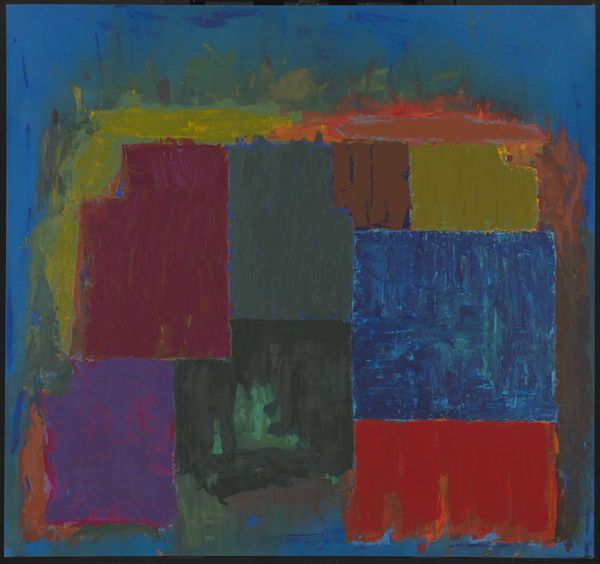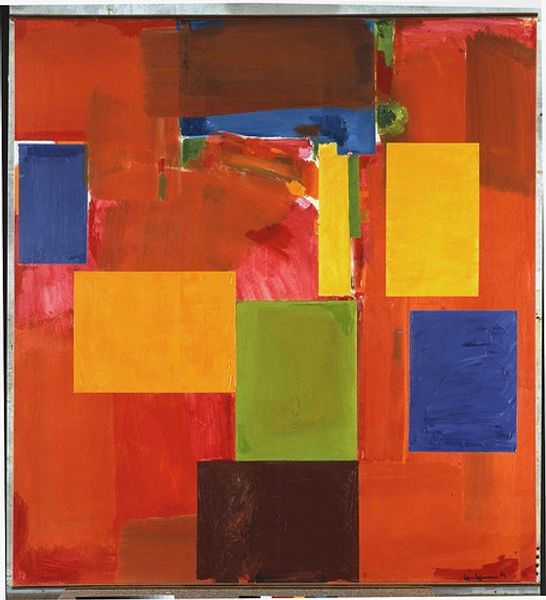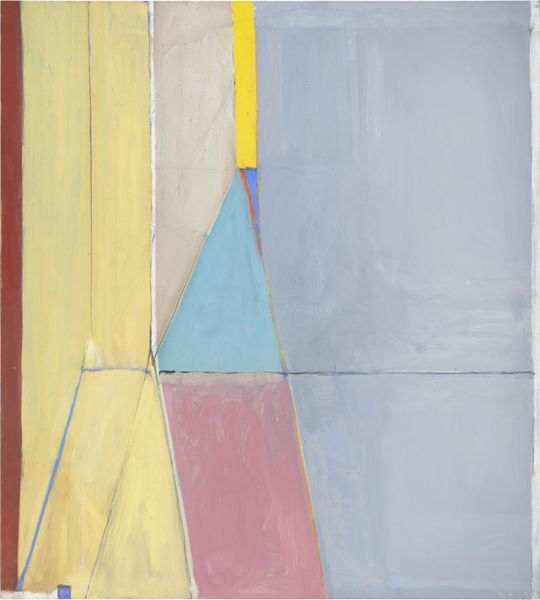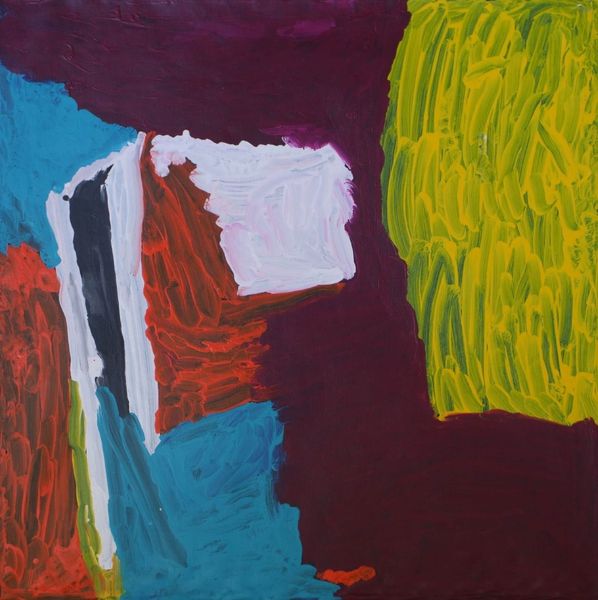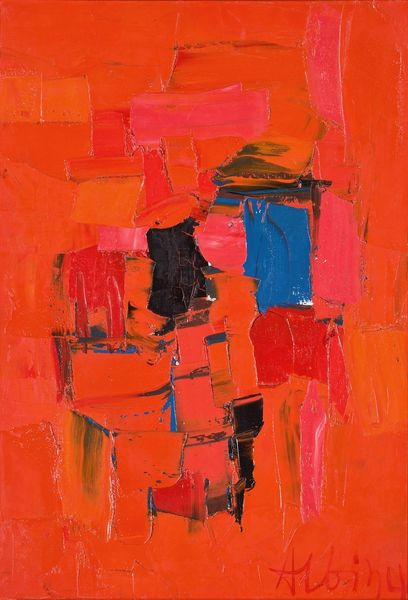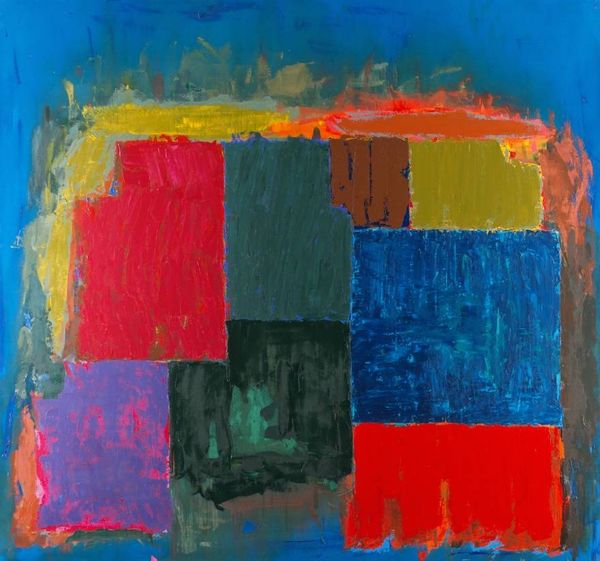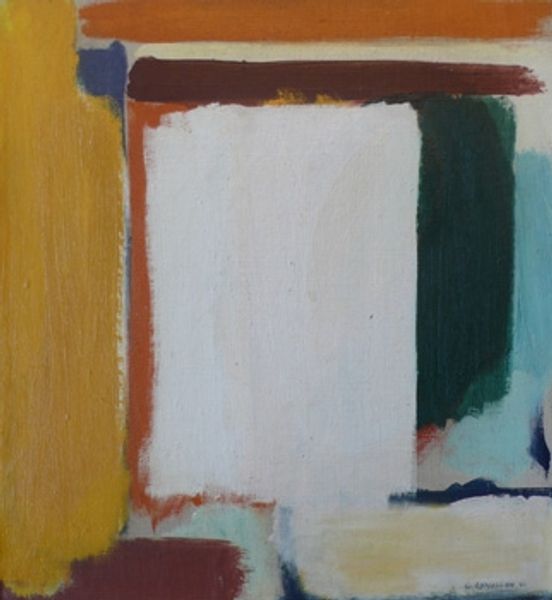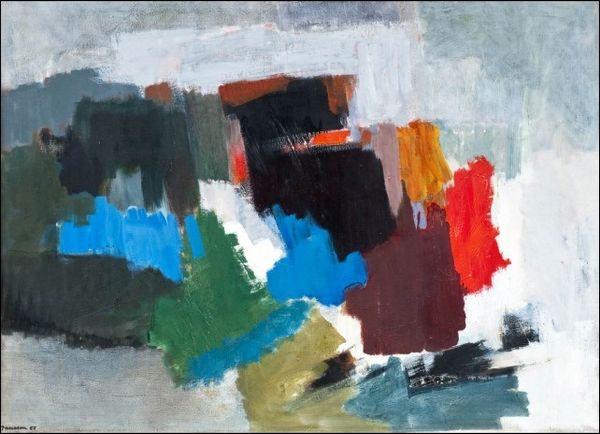
acrylic-paint
#
abstract-expressionism
#
abstract expressionism
#
acrylic
#
acrylic-paint
#
form
#
acrylic on canvas
#
geometric-abstraction
#
abstraction
Dimensions: 213.3 x 183.2 cm
Copyright: Hans Hofmann,Fair Use
Curator: Ah, yes, Hans Hofmann’s "Memoria in Aeternum" from 1962. An arresting piece, composed with acrylic on canvas. It currently resides here at MoMA. What's your take? Editor: Stark. Makes me feel... suspended. Like looking into a foggy abyss with little beacons blinking in the murk. The weight of the dark field, it feels heavy, oppressive even, against those rigid geometric shapes. Curator: Oppressive... interesting choice of words. The backdrop could symbolize uncertainty that surrounds human affairs, the void of memory against these brightly hued forms – yellow, red – might represent flashes of life, the moments we desperately hold onto. Do you see these works as Hofmann reflecting on life in general? Editor: Perhaps, but it’s his use of such basic shapes... almost child-like in their simplicity, yet juxtaposed with such a mature, somber palette. Reminds me a little of Rothko but much more structured. Do you suppose the title gives clues to Hofmann's experience, a sort of abstract emotional state of being frozen or held within eternal time? Curator: The title certainly directs us, doesn't it? "Memory in Eternity". Hofmann often explored the push and pull between forms, the way colors interact and vibrate against each other. Here, he’s less about pure abstraction and more about imbuing geometry with feeling, emotion… even narrative. The rawness contrasts perfectly to invite the viewer to confront memory. Editor: It does make one pause, doesn’t it? Wonder what memories Hofmann was wrestling with when he splashed down those shapes. A memory not just frozen, but projected out into a space as vast and unforgiving as this... intriguing, that even simple shapes can contain so much emotion. What stands out most is his use of paint—messy at the top—yet rigid blocks that speak directly about grief or despair without sentimental embellishments. A brave choice of colour against the muted field to address the inevitable decay of human memory within an institutional history, perhaps. Curator: It’s a poignant reflection indeed. Thanks for adding insight, always appreciate your unique take. Editor: Anytime. Perhaps those memories aren’t so lost after all, if art like this keeps them echoing.
Comments
No comments
Be the first to comment and join the conversation on the ultimate creative platform.

